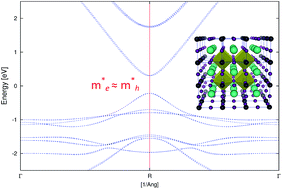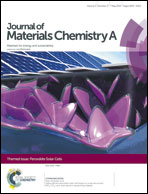Organic–inorganic halide perovskites: an ambipolar class of materials with enhanced photovoltaic performances
Abstract
After a brief introduction concerning the general properties of the perovskite class of materials, we review the most relevant contributions to studies on organic–inorganic halide perovskites concerning their application in photovoltaics. Moving on from the rise of a new solar cell assembly procedure (Kojima et al., J. Am. Chem. Soc., 2009, 131, 6050–6051), we focus on the main developments that have occurred over the last five years that have led to high photoconversion efficiencies. We particularly refer to the contribution provided by theoreticians, and how a synergy between theoreticians and experimentalists has enabled us to understand many fundamental characteristics of such an extremely appealing class of materials. Particular attention is devoted towards the ambipolar (i.e., both p- and n-conductive) nature of organic–inorganic halide perovskites, and to the role that the methylammonium cation plays in the structural and electronic properties of these compounds.

- This article is part of the themed collection: Perovskite Solar Cells

 Please wait while we load your content...
Please wait while we load your content...